What you need to know about the ear & hearing loss
The Ear
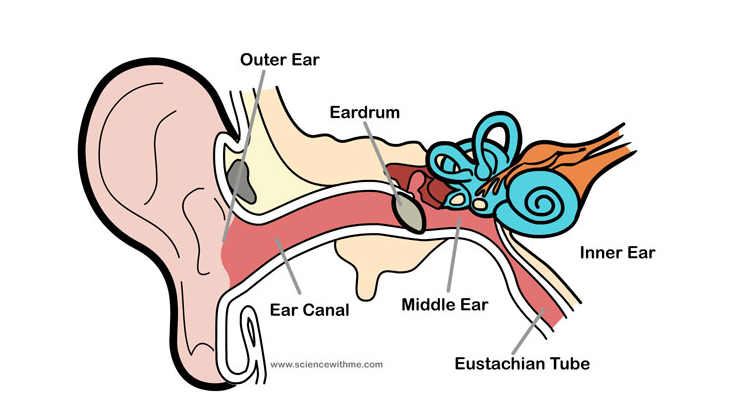
Retrieved from: http://sciencewithme.com/learn-about-the-ear/
Hierarchy of Listening Skills
Detection is the ability to respond to the presence or absence of sound. It is the first step in learning to listen.
Discrimination is the ability to perceive similarities and differences between two or more speech stimuli.
Identification is the ability to label by repeating, pointing to or writing the speech stimulus heard.
Comprehension is the ability to understand meaning of speech by answering questions, following directions, paraphrasing, and/or participating in a conversation. Comprehension requires auditory memory and follows an auditory sequencing
As Audiogram
An audiogram shows the quietest sounds you can just hear. The red circles represent the right ear and the blue X’s represent the left ear.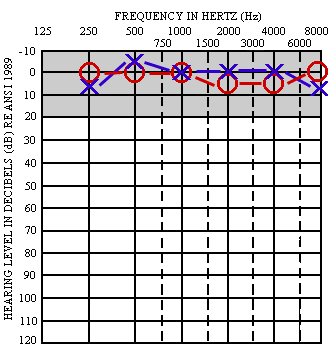
Degrees of Hearing Loss
Degree of hearing loss refers to the severity of the loss. The table below shows one of the more commonly used classification systems. Retrieved from: https://www.asha.org/Practice-Portal/Clinical-Topics/Hearing-Loss/ Adapted from Clark, 1981
| Degree of Loss | Hearing Loss Range (dB HL) |
| Normal | -10 to 15 |
| Slight | 16 to 25 |
| Mild | 26 to 40 |
| Moderate | 41 to 55 |
| Moderately Severe | 56 to 70 |
| Severe | 71 to 90 |
| Profound | 90+ |
Types of Hearing Loss
Conductive
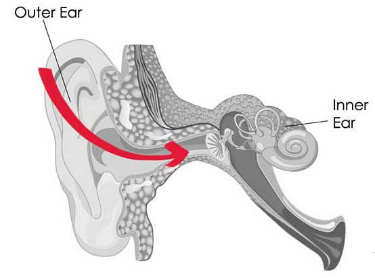
Sounds can’t get from the outer ear, which is the visible part, to the eardrum and tiny bones of the inner ear. It can be caused by such things as too much earwax, ear infections, a punctured eardrum, a fluid build-up, or abnormal bone growth in the middle ear such as Otosclerosis.
Sensorineural
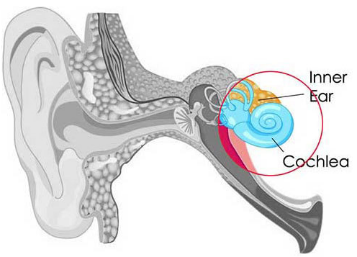
This type of loss occurs when the hearing organ, the cochlea, and/or the auditory nerve is damaged or malfunctions so it is unable to accurately send the electrical information to the brain. Sensorineural Hearing Loss is usually permanent. It can be genetic or caused by the natural aging process, diseases, accidents or exposure to loud noises, certain kinds of chemicals, and medications.
Mixed
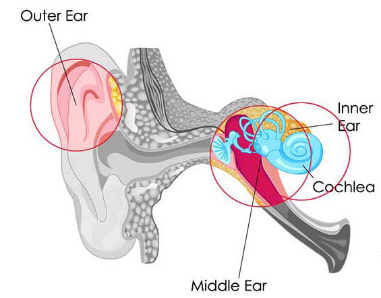
This type of loss occurs when both Conductive Hearing Loss and Sensorineural Hearing Loss are present.
The “Speech Banana” and Environmental Sounds
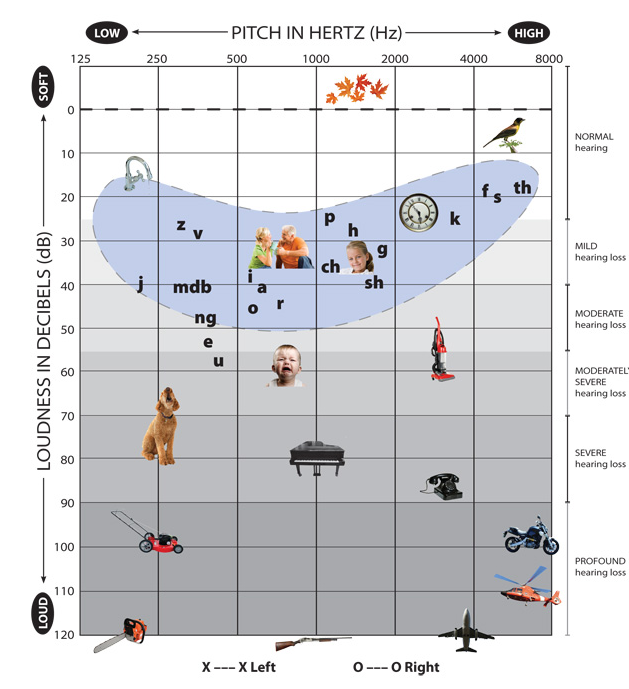
Retrieved from: http://www.sickkids.ca/communicationdisorders/What-we-do/Audiology/The-Audiogram/index.html
Understanding Current Hearing Assistive Technology (HAT) Guidelines
In the past, there were FM systems to borrow from PaTTAN Short Term Loan as well as the LIU Lending Library. Based on scope of practice, only qualified professionals will be fitting these devices. Only an audiologist may make the requests through short term loan. While qualifications for fitting remote microphone HAT are not currently regulated by the FDA, audiologists are the only hearing health care professionals with the appropriate training to fulfill the recommendations of these guidelines relative to fitting HAT. Please refer to the Resources area- Hearing Assistive Technology– for more information.
Who is qualified to decide if a child needs HATS?
- The ability to select, evaluate, fit, and deliver FM systems should be handled by a certified audiologist
- If a school district or IU has employed an educational audiologist, then that audiologist should be the person requesting the HAT, if not, you may need to consider consulting with a community audiologist.
The Communication Plan
The Communication Plan for a Child who is Deaf or Hard of Hearing is a description of the type(s) of communication support a student who is deaf, hard of hearing, or deaf-blind will receive to support reading, communication, and the access to and use of assistive technologies. The communication plan is mandated by IDEA 2004 [300.324(a)(2)(iv)] and implements Pennsylvania’s Chapter 14 Regulations [§14.131(a)(1)(iii)] as a required component of the IEP for any student with a hearing loss who is receiving a service, support, or activity from an audiologist and/or teacher of the deaf and hard of hearing.
Retrieved from https://www.pattan.net/Disabilities/Deaf-and-Hard-of-Hearing/Communication-Plan
